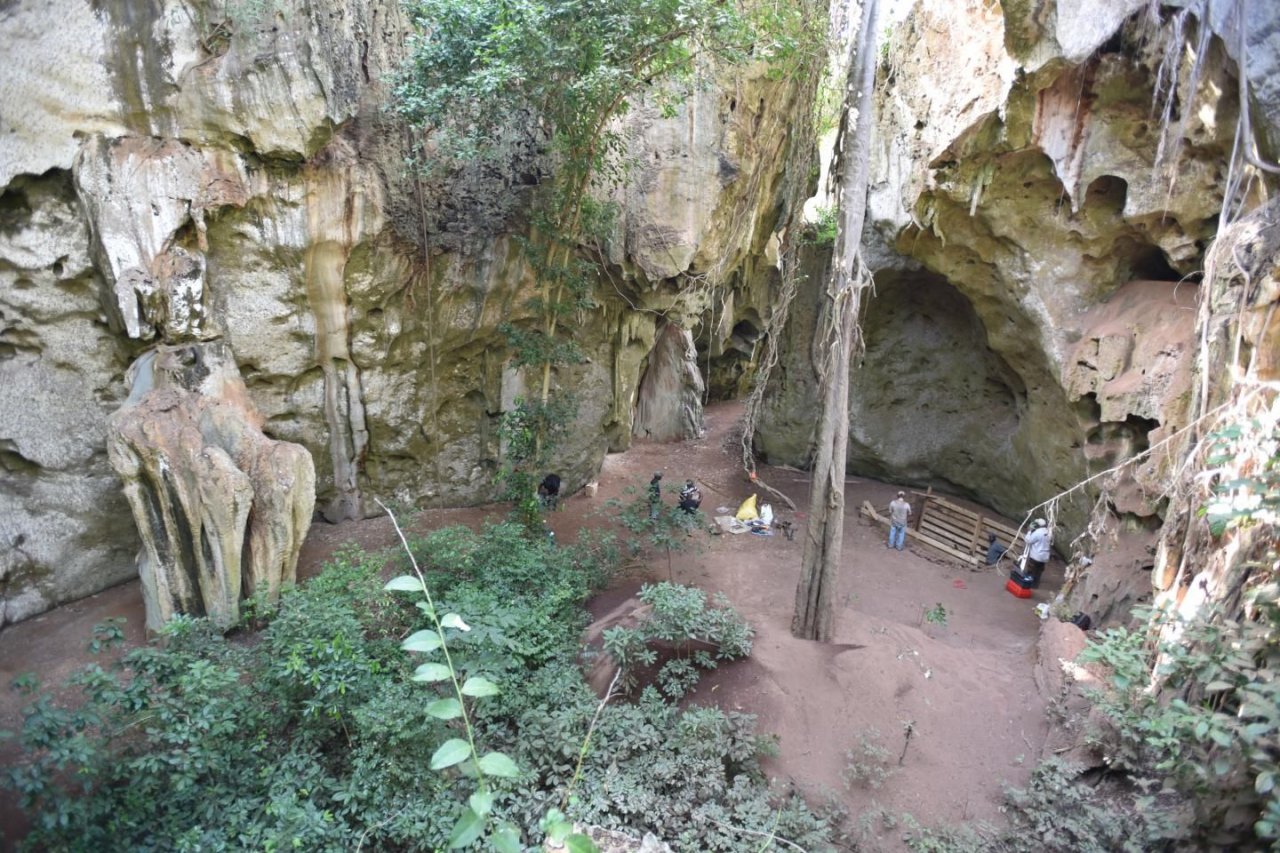{"id":"54456","type":"widget","widget":"video","ratio":"16by9"}
In the story of human evolution, East Africa has received short shrift. Archaeologists have long thought men and women marched toward technological progress in the continent's northern and southern regions before migrating across the globe. But an enormous cave in Kenya is not just adding to the story—it's rewriting it.
Ten years ago, Nicole Boivin, director of Germany's Max Planck Institute for the Science of Human History, traveled to Panga ya Saidi, a network of caves in the Rift Valley, less than 10 miles from the shores of the Indian Ocean. Boivin was hoping to better understand the trade routes established by East Africans 2,000 years ago. "As soon as we got to the site, we could see it was special," Boivin says. Most of the cave roofs had collapsed, and the interior, open to the sky, thrived with flora and fauna. Making her way from one cave to the next, Boivin found enormous and well-preserved pieces of pottery from the Iron Age, which extended from about A.D. 200 to 1000.
But things got a lot more interesting in subsequent years, when the team reached a layer containing tools and beads made from shells (one bead was the oldest ever found in Kenya), along with a piece of charcoal from 20,000 to 30,000 years ago. Eventually, they found stone tools dating back 78,000 years. At layers dating to 67,000 years ago, the tools are smaller, reflecting a change in technology that marks the start of the Later Stone Age.

The picture of East Africa in the Middle Stone Age had previously been sparse, in part because archaeologists had falsely assumed that ancient humans lived on savannahs rather than in tropical forests, like those at Panga ya Saidi. "Sometimes ideas form in archaeology that are hard to shake," Boivin says.

The caves do more than prove that humans evolved in a range of habitats; they upend our conception of how that evolution happened. Artifacts at Panga ya Saidi from after 67,000 years ago show a mix of technologies—large and small tools overlapping in the cave record. That contradicts the once-common view that a sudden and unexpected cognitive leap led to the technological revolution of the Later Stone Age, and it solidifies the newer idea that change ebbed and flowed over the course of tens of thousands of years.













